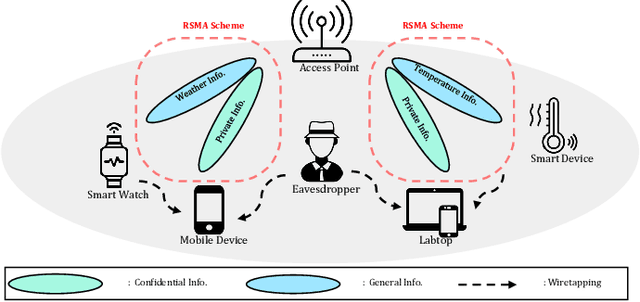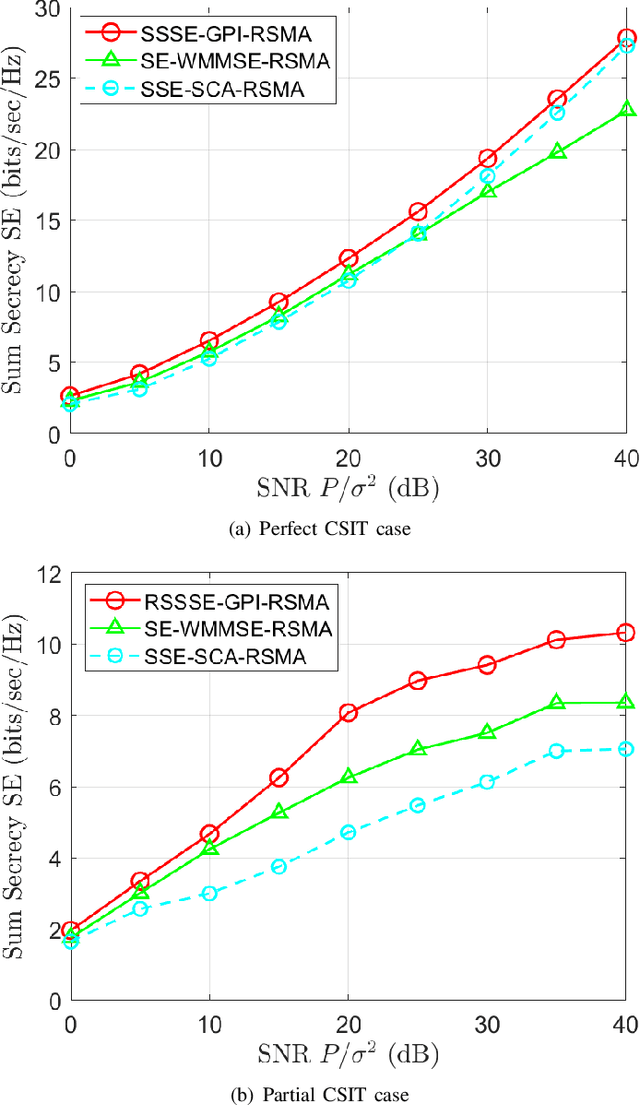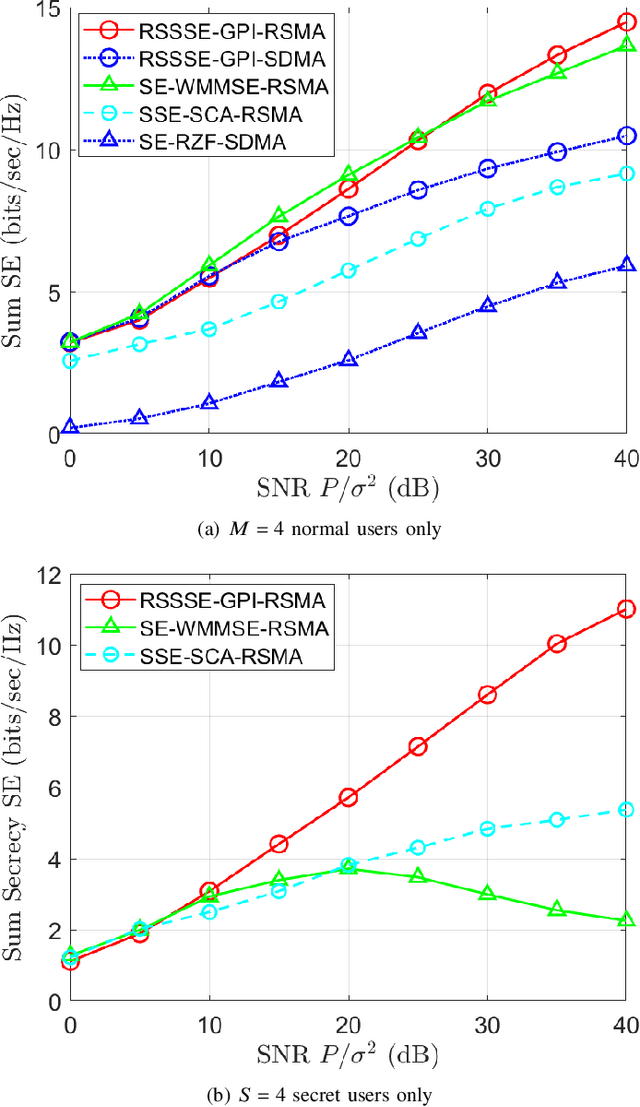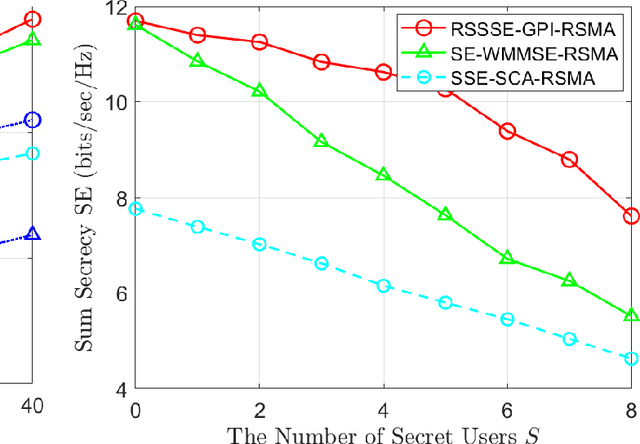Jeonghun Park
State Estimation with 1-Bit Observations and Imperfect Models: Bussgang Meets Kalman in Neural Networks
Jul 23, 2025Abstract:State estimation from noisy observations is a fundamental problem in many applications of signal processing. Traditional methods, such as the extended Kalman filter, work well under fully-known Gaussian models, while recent hybrid deep learning frameworks, combining model-based and data-driven approaches, can also handle partially known models and non-Gaussian noise. However, existing studies commonly assume the absence of quantization distortion, which is inevitable, especially with non-ideal analog-to-digital converters. In this work, we consider a state estimation problem with 1-bit quantization. 1-bit quantization causes significant quantization distortion and severe information loss, rendering conventional state estimation strategies unsuitable. To address this, inspired by the Bussgang decomposition technique, we first develop the Bussgang-aided Kalman filter by assuming perfectly known models. The proposed method suitably captures quantization distortion into the state estimation process. In addition, we propose a computationally efficient variant, referred to as the reduced Bussgang-aided Kalman filter and, building upon it, introduce a deep learning-based approach for handling partially known models, termed the Bussgang-aided KalmanNet. In particular, the Bussgang-aided KalmanNet jointly uses a dithering technique and a gated recurrent unit (GRU) architecture to effectively mitigate the effects of 1-bit quantization and model mismatch. Through simulations on the Lorenz-Attractor model and the Michigan NCLT dataset, we demonstrate that our proposed methods achieve accurate state estimation performance even under highly nonlinear, mismatched models and 1-bit observations.
Space-Time Beamforming for LEO Satellite Communications
May 12, 2025Abstract:Inter-beam interference poses a significant challenge in low Earth orbit (LEO) satellite communications due to dense satellite constellations. To address this issue, we introduce spacetime beamforming, a novel paradigm that leverages the spacetime channel vector, uniquely determined by the angle of arrival (AoA) and relative Doppler shift, to optimize beamforming between a moving satellite transmitter and a ground station user. We propose two space-time beamforming techniques: spacetime zero-forcing (ST-ZF) and space-time signal-to-leakage-plus-noise ratio (ST-SLNR) maximization. In a partially connected interference channel, ST-ZF achieves a 3dB SNR gain over the conventional interference avoidance method using maximum ratio transmission beamforming. Moreover, in general interference networks, ST-SLNR beamforming significantly enhances sum spectral efficiency compared to conventional interference management approaches. These results demonstrate the effectiveness of space-time beamforming in improving spectral efficiency and interference mitigation for next-generation LEO satellite networks.
Uplink Coordinated Pilot Design for 1-bit Massive MIMO in Correlated Channel
Feb 19, 2025Abstract:In this paper, we propose a coordinated pilot design method to minimize the channel estimation mean squared error (MSE) in 1-bit analog-to-digital converters (ADCs) massive multiple-input multiple-output (MIMO). Under the assumption that the well-known Bussgang linear minimum mean square error (BLMMSE) estimator is used for channel estimation, we first observe that the resulting MSE leads to an intractable optimization problem, as it involves the arcsin function and a complex multiple matrix ratio form. To resolve this, we derive the approximate MSE by assuming the low signal-to-noise ratio (SNR) regime, by which we develop an efficient coordinated pilot design based on a fractional programming technique. The proposed pilot design is distinguishable from the existing work in that it is applicable in general system environments, including correlated channel and multi-cell environments. We demonstrate that the proposed method outperforms the channel estimation accuracy performance compared to the conventional approaches.
Reducing Latency by Eliminating CSIT Feedback: FDD Downlink MIMO Precoding Without CSIT Feedback for Internet-of-Things Communications
Jan 13, 2025



Abstract:This paper presents a novel framework for low-latency frequency division duplex (FDD) multi-input multi-output (MIMO) transmission with Internet of Things (IoT) communications. Our key idea is eliminating feedback associated with downlink channel state information at the transmitter (CSIT) acquisition. Instead, we propose to reconstruct downlink CSIT from uplink reference signals by exploiting the frequency invariance property on channel parameters. Nonetheless, the frequency disparity between the uplink and downlink makes it impossible to get perfect downlink CSIT, resulting in substantial interference. To address this, we formulate a max-min fairness problem and propose a rate-splitting multiple access (RSMA)-aided efficient precoding method. In particular, to fully harness the potential benefits of RSMA, we propose a method that approximates the error covariance matrix and incorporates it into the precoder optimization process. This approach effectively accounts for the impact of imperfect CSIT, enabling the design of a robust precoder that efficiently handles CSIT inaccuracies. Simulation results demonstrate that our framework outperforms other baseline methods in terms of the minimum spectral efficiency when no direct CSI feedback is used. Moreover, we show that our framework significantly reduces communication latency compared to conventional CSI feedback-based methods, underscoring its effectiveness in enhancing latency performance for IoT communications.
A Selective Secure Precoding Framework for MU-MIMO Rate-Splitting Multiple Access Networks Under Limited CSIT
Dec 26, 2024



Abstract:In this paper, we propose a robust and adaptable secure precoding framework designed to encapsulate a intricate scenario where legitimate users have different information security: secure private or normal public information. Leveraging rate-splitting multiple access (RSMA), we formulate the sum secrecy spectral efficiency (SE) maximization problem in downlink multi-user multiple-input multiple-output (MIMO) systems with multi-eavesdropper. To resolve the challenges including the heterogeneity of security, non-convexity, and non-smoothness of the problem, we initially approximate the problem using a LogSumExp technique. Subsequently, we derive the first-order optimality condition in the form of a generalized eigenvalue problem. We utilize a power iteration-based method to solve the condition, thereby achieving a superior local optimal solution. The proposed algorithm is further extended to a more realistic scenario involving limited channel state information at the transmitter (CSIT). To effectively utilize the limited channel information, we employ a conditional average rate approach. Handling the conditional average by deriving useful bounds, we establish a lower bound for the objective function under the conditional average. Then we apply the similar optimization method as for the perfect CSIT case. In simulations, we validate the proposed algorithm in terms of the sum secrecy SE.
Low-Earth Orbit Satellite Network Analysis: Coverage under Distance-Dependent Shadowing
Sep 06, 2024Abstract:This paper offers a thorough analysis of the coverage performance of Low Earth Orbit (LEO) satellite networks using a strongest satellite association approach, with a particular emphasis on shadowing effects modeled through a Poisson point process (PPP)-based network framework. We derive an analytical expression for the coverage probability, which incorporates key system parameters and a distance-dependent shadowing probability function, explicitly accounting for both line-of-sight and non-line-of-sight propagation channels. To enhance the practical relevance of our findings, we provide both lower and upper bounds for the coverage probability and introduce a closed-form solution based on a simplified shadowing model. Our analysis reveals several important network design insights, including the enhancement of coverage probability by distance-dependent shadowing effects and the identification of an optimal satellite altitude that balances beam gain benefits with interference drawbacks. Notably, our PPP-based network model shows strong alignment with other established models, confirming its accuracy and applicability across a variety of satellite network configurations. The insights gained from our analysis are valuable for optimizing LEO satellite deployment strategies and improving network performance in diverse scenarios.
Spectrum Sharing Between Low Earth Orbit Satellite and Terrestrial Networks: A Stochastic Geometry Perspective Analysis
Aug 22, 2024Abstract:Low Earth orbit (LEO) satellite networks with mega constellations have the potential to provide 5G and beyond services ubiquitously. However, these networks may introduce mutual interference to both satellite and terrestrial networks, particularly when sharing spectrum resources. In this paper, we present a system-level performance analysis to address these interference issues using the tool of stochastic geometry. We model the spatial distributions of satellites, satellite users, terrestrial base stations (BSs), and terrestrial users using independent Poisson point processes on the surfaces of concentric spheres. Under these spatial models, we derive analytical expressions for the ergodic spectral efficiency of uplink (UL) and downlink (DL) satellite networks when they share spectrum with both UL and DL terrestrial networks. These derived ergodic expressions capture comprehensive network parameters, including the densities of satellite and terrestrial networks, the path-loss exponent, and fading. From our analysis, we determine the conditions under which spectrum sharing with UL terrestrial networks is advantageous for both UL and DL satellite networks. Our key finding is that the optimal spectrum sharing configuration among the four possible configurations depends on the density ratio between terrestrial BSs and users, providing a design guideline for spectrum management. Simulation results confirm the accuracy of our derived expressions.
LLM-Empowered Resource Allocation in Wireless Communications Systems
Aug 06, 2024Abstract:The recent success of large language models (LLMs) has spurred their application in various fields. In particular, there have been efforts to integrate LLMs into various aspects of wireless communication systems. The use of LLMs in wireless communication systems has the potential to realize artificial general intelligence (AGI)-enabled wireless networks. In this paper, we investigate an LLM-based resource allocation scheme for wireless communication systems. Specifically, we formulate a simple resource allocation problem involving two transmit pairs and develop an LLM-based resource allocation approach that aims to maximize either energy efficiency or spectral efficiency. Additionally, we consider the joint use of low-complexity resource allocation techniques to compensate for the reliability shortcomings of the LLM-based scheme. After confirming the applicability and feasibility of LLM-based resource allocation, we address several key technical challenges that remain in applying LLMs in practice.
FDD Massive MIMO: How to Optimally Combine UL Pilot and Limited DL CSI Feedback?
May 14, 2024



Abstract:In frequency-division duplexing (FDD) multiple-input multiple-output (MIMO) systems, obtaining accurate downlink channel state information (CSI) for precoding is vastly challenging due to the tremendous feedback overhead with the growing number of antennas. Utilizing uplink pilots for downlink CSI estimation is a promising approach that can eliminate CSI feedback. However, the downlink CSI estimation accuracy diminishes significantly as the number of channel paths increases, resulting in reduced spectral efficiency. In this paper, we demonstrate that achieving downlink spectral efficiency comparable to perfect CSI is feasible by combining uplink CSI with limited downlink CSI feedback information. Our proposed downlink CSI feedback strategy transmits quantized phase information of downlink channel paths, deviating from conventional limited methods. We put forth a mean square error (MSE)-optimal downlink channel reconstruction method by jointly exploiting the uplink CSI and the limited downlink CSI. Armed with the MSE-optimal estimator, we derive the MSE as a function of the number of feedback bits for phase quantization. Subsequently, we present an optimal feedback bit allocation method for minimizing the MSE in the reconstructed channel through phase quantization. Utilizing a robust downlink precoding technique, we establish that the proposed downlink channel reconstruction method is sufficient for attaining a sum-spectral efficiency comparable to perfect CSI.
Splitting Messages in the Dark- Rate-Splitting Multiple Access for FDD Massive MIMO Without CSI Feedback
May 02, 2024Abstract:A critical hindrance to realize frequency division duplex (FDD) massive multi-input multi-output (MIMO) systems is overhead associated with downlink channel state information at the transmitter (CSIT) acquisition. To address this challenge, we propose a novel framework that achieves robust performances while completely eliminating downlink CSIT training and feedback. Specifically, by exploiting partial frequency invariance of channel parameters between the uplink (UL) and downlink (DL), we adopt the 2D-Newtonized orthogonal matching pursuit (2D-NOMP) algorithm to reconstruct DL CSIT from UL training. Due to inherent discrepancies arising from a carrier frequency difference between two disjoint bands, however, the multi-user interference is inevitable. To overcome this, we propose a precoding method that employs rate-splitting multiple access (RSMA) and also develop an error covariance matrix (ECM) estimation method by using the observed Fisher information matrix (O-FIM). We find that this ECM estimation is crucial for our precoding design in maximizing the sum spectral efficiency (SE). Simulation results show that our method significantly improves the sum SE compared to other state-of-the-art approaches, underscoring the importance of our ECM estimation.
 Add to Chrome
Add to Chrome Add to Firefox
Add to Firefox Add to Edge
Add to Edge